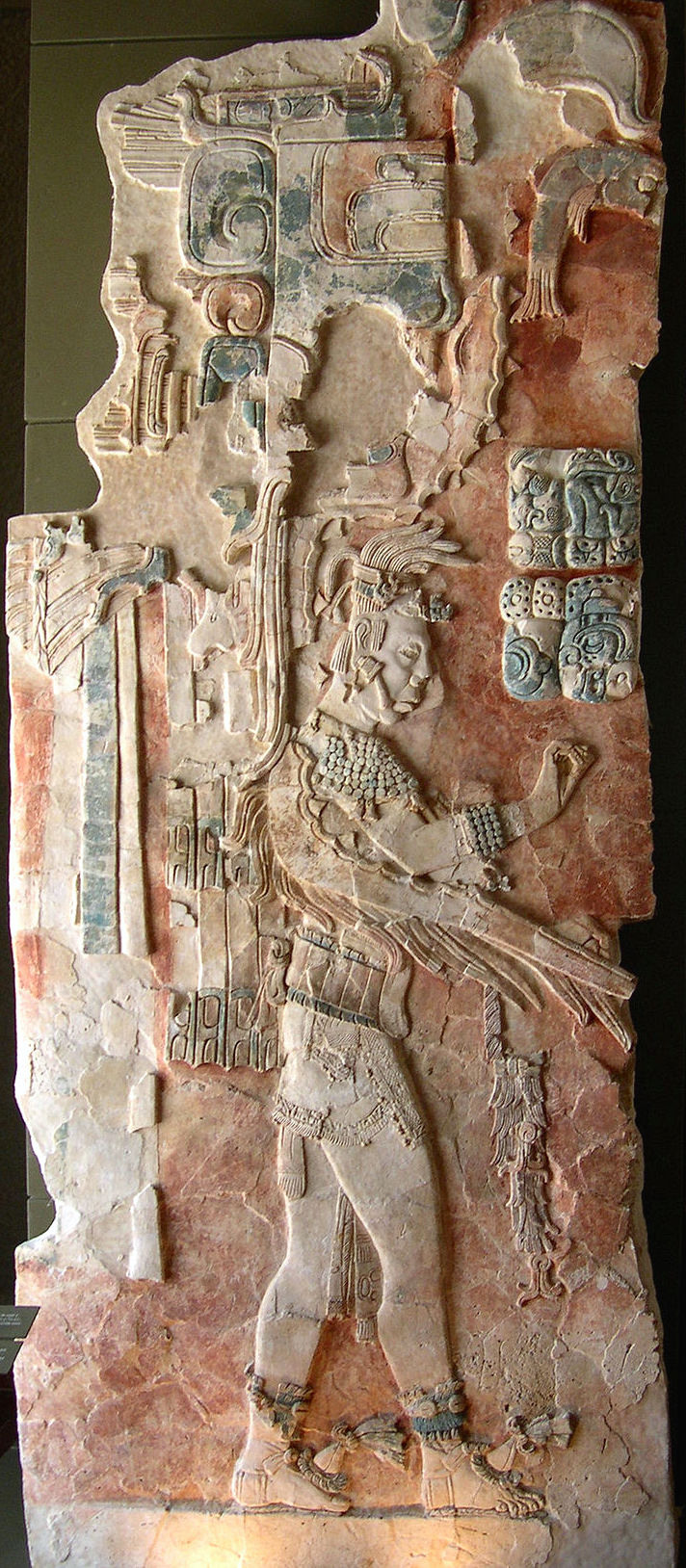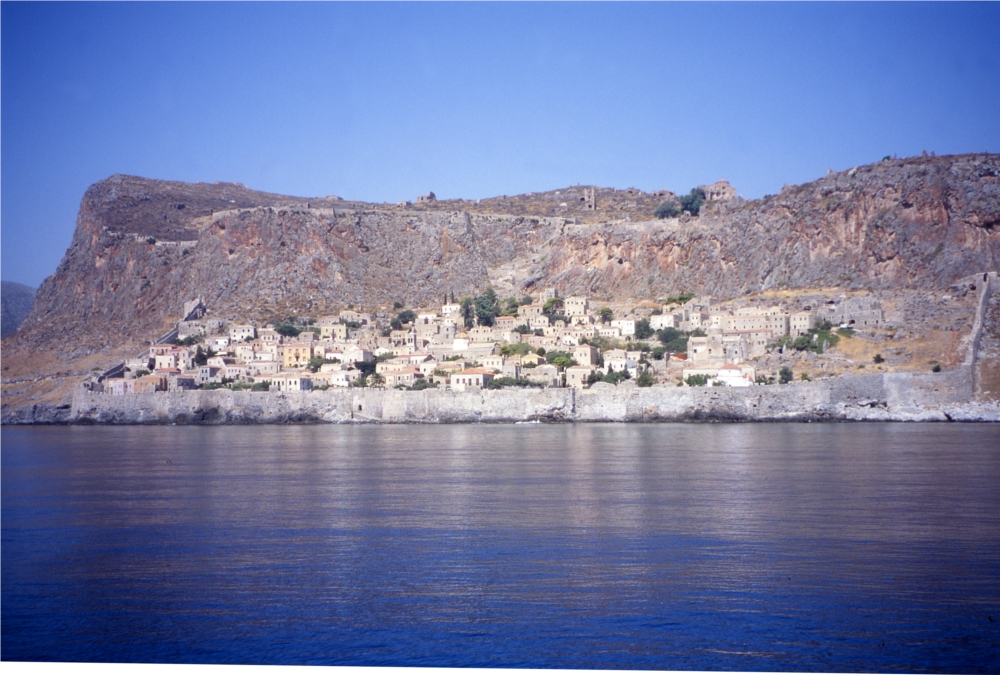|
K'an B'alam I
Kan Bahlam IThe ruler's name, when transcribed is (K'INICH) KAN AHLAMma, translated "Radiant Snake Jaguar". (), also known as Chan Bahlum I, (September 18, 524 – February 1, 583) was an ajaw of the Maya city-state of Palenque. He acceded to the throne on April 6, 572 at age 47 and ruled until his death.These are the dates indicated on the Maya inscriptions in Mesoamerican Long Count calendar, Born: 9.4.10.1.5 11 Chikchan 13 Ch'en, Acceded: 9.6.18.5.12 10 Eb 0 Wo and Died: 9.7.9.5.5 11 Chikchan 3 K'ayab. Kan Bahlam was most likely the younger brother of his predecessor, Ahkal Mo' Nahb II and probably son of K'an Joy Chitam I. He was the first ruler of Palenque to use the title ''K'inich'', albeit inconsistently. The title is usually translated as "radiant" but literally means "sun The Sun is the star at the center of the Solar System. It is a nearly perfect ball of hot plasma, heated to incandescence by nuclear fusion reactions in its core. The Sun radiates this energy ... [...More Info...] [...Related Items...] OR: [Wikipedia] [Google] [Baidu] |
Ajaw
Ajaw or Ahau ('Lord') is a pre-Columbian Maya political title attested from epigraphic inscriptions. It is also the name of the 20th day of the ''tzolkʼin'', the Maya divinatory calendar, on which a ruler's ''kʼatun''-ending rituals would fall. Background The word is known from several Mayan languages both those in pre-Columbian use (such as in Classic Maya), as well as in their contemporary descendant languages (in which there may be observed some slight variations). "Ajaw" is the modernised orthography in the standard revision of Mayan orthography, put forward in 1994 by the Guatemalan ''Academia de Lenguas Mayas'', and now widely adopted by Mayanist scholars. Before this standardisation, it was more commonly written as "Ahau", following the orthography of 16th-century Yucatec Maya in Spanish transcriptions (now ''Yukatek'' in the modernised style). In the Maya hieroglyphics writing system, the representation of the word ''ajaw'' could be as either a logogram, or spelle ... [...More Info...] [...Related Items...] OR: [Wikipedia] [Google] [Baidu] |
Palenque
Palenque (; Yucatec Maya language, Yucatec Maya: ), also anciently known in the Itza Language as Lakamhaʼ ("Big Water or Big Waters"), was a Maya city City-state, state in southern Mexico that perished in the 8th century. The Palenque ruins date from ca. 226 BC to ca. 799 AD. After its decline, it was overgrown by the Selva Lacandona, jungle of cedar, mahogany, and sapodilla trees, but has since been excavated and restored. It is located near the Usumacinta River in the Mexican state of Chiapas, about 130 km (81 mi) south of Ciudad del Carmen, above sea level. It averages a humid 26°C (79°F) with roughly of rain a year. Palenque is a medium-sized site, smaller than Tikal, Chichen Itza, or Copán, but it contains some of the finest architecture, sculpture, roof comb and bas-relief carvings that the Maya civilization, Mayas produced. Much of the history of Palenque has been reconstructed from reading the hieroglyphic inscriptions on the many monuments; historians now have a l ... [...More Info...] [...Related Items...] OR: [Wikipedia] [Google] [Baidu] |
Kʼan Joy Chitam I
Kʼan Joy Chitam I,The ruler's name, when transcribed is KʼAN-na-JOY HITAMma, translated "Precious/Yellow Tied Peccary". also known as Hok, Kan Xul I and Kʼan Hokʼ Chitam I, (May 3, 490 – February 6, 565) was an ajaw of the Maya city-state of Palenque. He took the throne on February 6, 529 at age 34, ending an interregnum that had lasted for a little over four years.These are the dates indicated on the Maya inscriptions in Mesoamerican Long Count calendar The Mesoamerican Long Count calendar is a non-repeating, vigesimal (base 20) and octodecimal (base 18) calendar used by several pre-Columbian Mesoamerican cultures, most notably the Maya. For this reason, it is often known as the May ..., Born: 9.2.15.3.8 12 Lamat 6 Wo, Acceded: 9.4.14.10.4 5 Kʼan 12 Kʼayab and Died: 9.6.11.0.16 7 Kib 4 Kʼayab. Notes Sources {{DEFAULTSORT:Chitam, Kan Joy, I 490 births 565 deaths Monarchs of Palenque 6th-century monarchs in North America 6th century in ... [...More Info...] [...Related Items...] OR: [Wikipedia] [Google] [Baidu] |
Maya Religion
The traditional Maya or Mayan religion of the extant Maya peoples of Guatemala, Belize, western Honduras, and the Tabasco, Chiapas, Quintana Roo, Campeche and Yucatán states of Mexico is part of the wider frame of Mesoamerican religion. As is the case with many other contemporary Mesoamerican religions, it results from centuries of symbiosis with Roman Catholicism. When its pre-Hispanic antecedents are taken into account, however, traditional Maya religion has already existed for more than two and a half millennia as a recognizably distinct phenomenon. Before the advent of Christianity, it was spread over many indigenous kingdoms, all with their own local traditions. Today, it coexists and interacts with pan-Mayan syncretism, the 're-invention of tradition' by the Pan-Maya movement, and Christianity in its various denominations. Sources of traditional Mayan religion The most important source on traditional Maya religion is the Mayas themselves: the incumbents of positions w ... [...More Info...] [...Related Items...] OR: [Wikipedia] [Google] [Baidu] |
Ajaw
Ajaw or Ahau ('Lord') is a pre-Columbian Maya political title attested from epigraphic inscriptions. It is also the name of the 20th day of the ''tzolkʼin'', the Maya divinatory calendar, on which a ruler's ''kʼatun''-ending rituals would fall. Background The word is known from several Mayan languages both those in pre-Columbian use (such as in Classic Maya), as well as in their contemporary descendant languages (in which there may be observed some slight variations). "Ajaw" is the modernised orthography in the standard revision of Mayan orthography, put forward in 1994 by the Guatemalan ''Academia de Lenguas Mayas'', and now widely adopted by Mayanist scholars. Before this standardisation, it was more commonly written as "Ahau", following the orthography of 16th-century Yucatec Maya in Spanish transcriptions (now ''Yukatek'' in the modernised style). In the Maya hieroglyphics writing system, the representation of the word ''ajaw'' could be as either a logogram, or spelle ... [...More Info...] [...Related Items...] OR: [Wikipedia] [Google] [Baidu] |
Maya Civilization
The Maya civilization () of the Mesoamerican people is known by its ancient temples and glyphs. Its Maya script is the most sophisticated and highly developed writing system in the pre-Columbian Americas. It is also noted for its art, architecture, mathematics, calendar, and astronomical system. The Maya civilization developed in the Maya Region, an area that today comprises southeastern Mexico, all of Guatemala and Belize, and the western portions of Honduras and El Salvador. It includes the northern lowlands of the Yucatán Peninsula and the highlands of the Sierra Madre, the Mexican state of Chiapas, southern Guatemala, El Salvador, and the southern lowlands of the Pacific littoral plain. Today, their descendants, known collectively as the Maya, number well over 6 million individuals, speak more than twenty-eight surviving Mayan languages, and reside in nearly the same area as their ancestors. The Archaic period, before 2000 BC, saw the first developments in agricul ... [...More Info...] [...Related Items...] OR: [Wikipedia] [Google] [Baidu] |
Mesoamerican Long Count Calendar
The Mesoamerican Long Count calendar is a non-repeating, vigesimal (base 20) and octodecimal (base 18) calendar used by several pre-Columbian Mesoamerican cultures, most notably the Maya. For this reason, it is often known as the Maya (or Mayan) Long Count calendar. Using a modified vigesimal tally, the Long Count calendar identifies a day by counting the number of days passed since a mythical creation date that corresponds to August 11, 3114 BCE in the proleptic Gregorian calendar. The Long Count calendar was widely used on monuments. Background The two most widely used calendars in pre-Columbian Mesoamerica were the 260-day Tzolkʼin and the 365-day Haabʼ. The equivalent Aztec calendars are known in Nahuatl as the Tonalpohualli and Xiuhpohualli. The combination of a Haabʼ and a Tzolkʼin date identifies a day in a combination which does not occur again for 18,980 days (52 Haabʼ cycles of 365 days equals 73 Tzolkʼin cycles of 260 days ... [...More Info...] [...Related Items...] OR: [Wikipedia] [Google] [Baidu] |
Rulers Of Palenque
A ruler, sometimes called a rule, line gauge, or scale, is a device used in geometry and technical drawing, as well as the engineering and construction industries, to measure distances or draw straight lines. Variants Rulers have long been made from different materials and in multiple sizes. Some are wooden. Plastics have also been used since they were invented; they can be molded with length markings instead of being scribed. Metal is used for more durable rulers for use in the workshop; sometimes a metal edge is embedded into a wooden desk ruler to preserve the edge when used for straight-line cutting. in length is useful for a ruler to be kept on a desk to help in drawing. Shorter rulers are convenient for keeping in a pocket. Longer rulers, e.g., , are necessary in some cases. Rigid wooden or plastic yardsticks, 1 yard long, and meter sticks, 1 meter long, are also used. Classically, long measuring rods were used for larger projects, now superseded by tap ... [...More Info...] [...Related Items...] OR: [Wikipedia] [Google] [Baidu] |
583 Deaths
__NOTOC__ Year 583 ( DLXXXIII) was a common year starting on Friday (link will display the full calendar) of the Julian calendar. The denomination 583 for this year has been used since the early medieval period, when the Anno Domini calendar era became the prevalent method in Europe for naming years. Events By place Byzantine Empire * Emperor Maurice decides to end the annual tribute to the Avars, a mounted people who have swept across Russia and threatened the Balkan Peninsula. They capture the cities of Singidunum (modern Belgrade) and Viminacium ( Moesia). Europe * King Liuvigild lays siege to Seville (Southern Spain), and forms an alliance with the Byzantines. He summons his rebellious son Hermenegild back to Toledo, and forces him to abandon the Chalcedonian Faith. * The city of Monemvasia ( Peloponnese) is founded by people seeking refuge from the Slavs and Avars. * Eboric (also called Euric) succeeds his father Miro as king of the Suevi ( Hispania ... [...More Info...] [...Related Items...] OR: [Wikipedia] [Google] [Baidu] |




